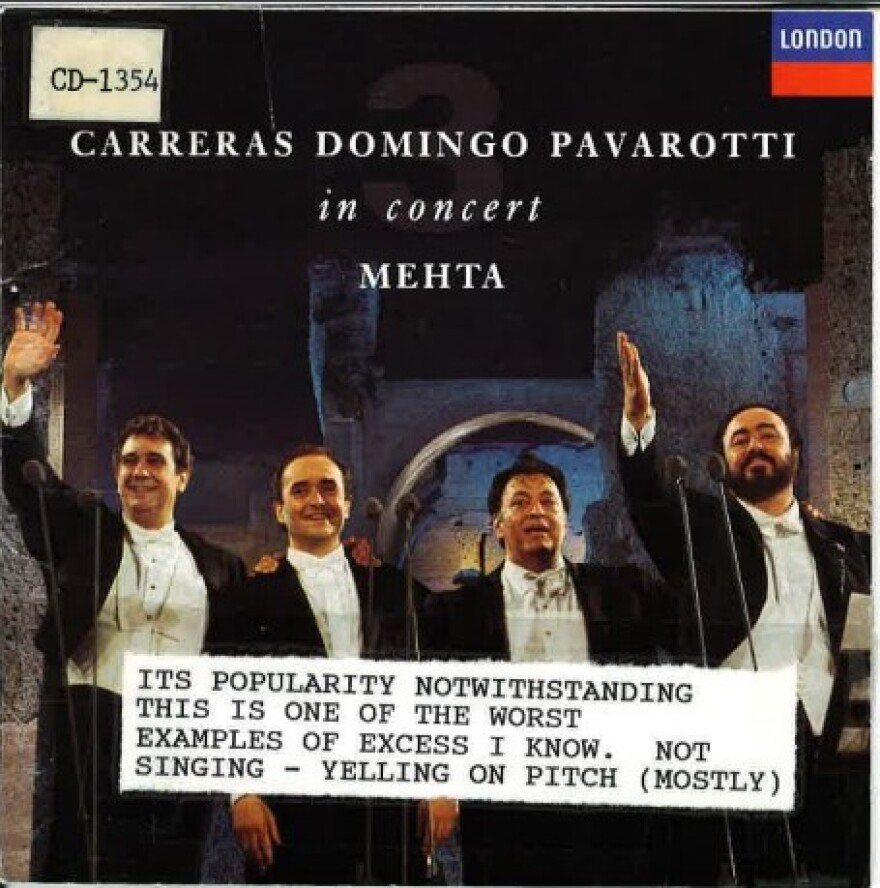Note: a version of this piece originally appeared in the Traverse City Record-Eagle as part of the "Tuning In" series.
Classical IPR is in the midst of a massive change, one that I’m guessing a number of readers have already done or are anticipating doing in their own homes: we’re switching from CDs to digital music files.
The station already made a major change like this decades ago when it went from records to CDs, and now we’re doing it again.
If you’ve been to IPR, you know that we have a massive CD library that surrounds our primary workspace.
It’s visually impressive to have walls filled with more than 10,000 CDs (see above).
The discs tell stories about the music played at IPR and the people who have worked here, too.
Who chose to add these particular albums at that particular point in history?
I suspect that the twenty discs of Gregorian chant were added to the library in 1994, during that brief period of time when the Benedictine monks of Santo Domingo de Silos were at the top of the charts.
There are entertaining handwritten notes stuck inside some of the jewel cases, such as former music director’s typed note on the cover of a Three Tenors album: “Its popularity not withstanding, this is one of the worst examples of excess I know.”

There’s also the album cover featuring a Renaissance-era portrait of a nude woman in which someone placed electrical tape over the portrait subject’s exposed body parts.
Not only are we setting aside these physical items with rich histories, but the process of converting to digital is tedious, too.
We have to rip the music from each disc (although hardware and software make parts of that process faster), edit each file, name each file according to a very specific convention, and then ingest the files into a new digital library.

If it’s such a pain, then why are we doing it at all?
In a nutshell, we have to.
Many record labels are only releasing new music in digital formats, so if we ever want to add new music to our library, we have to do it in a digital format.
CD players are hard to purchase new and hard to find parts to repair, so even though we have several CD players in the building, there’s no guarantee how long they’ll last and if we can repair or replace them when they go kaput.
CDs themselves take up a lot of physical space.
CDs also degrade over time in ways that aren’t immediately noticeable until a disc starts skipping 25 minutes into a Beethoven symphony and the host is in the kitchen getting a cup of coffee and doesn’t realize it for a couple of minutes. (You’ve never seen a radio host run so fast once they realize what’s happening, though)
We can still add notes to albums we love (or hate) and make collages of, shall we say, remarkable album covers. They just live in hard drives and scheduling software and, most importantly, in our collective and institutional memories.




